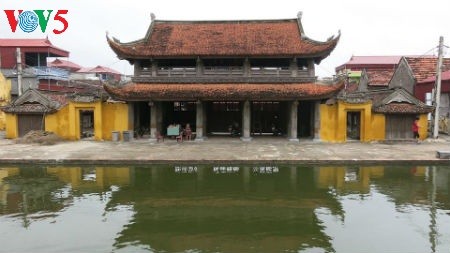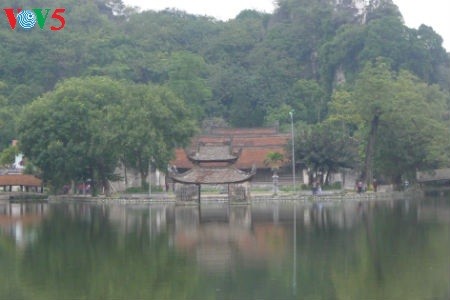(VOVworld) – The Red River Delta is the cradle of the ancient Vietnamese wet rice civilization and culture. It is also the place where Buddhism was first introduced to Vietnam. Pagodas have been built in almost every village to worship Buddha.
 |
| Keo Pagoda in Thai Binh province (Photo: Lan Anh/VOV5) |
Buddhism first spread to Vietnam’s Red River Delta in the 3rd century A.D. In addition to a banyan tree, a bamboo hedge, and a communal house, almost every village has a pagoda, which, together with the communal house, is the most typical architectural feature in the village.
A village pagoda holds the childhood memories of those born in rural areas, who often have a strong attachment to the sound of the pagoda bell.
To Vietnamese, a pagoda represents the Vietnamese philosophy of life, tolerance, harmony, and national religious beliefs.
 |
| Keo Pagoda in Hanh Thien village, Nam Dinh province (Photo: Lan Anh/VOV5) |
The pagoda removes social inequality from village activities. In the past, the communal house was only for other men, and village notables to gather and discuss village affairs. Women were not allowed to go there. The pagoda was the venue for women, country girls, and children. There is a saying, “Young people are happy at home; the elderly are happy at the pagoda”.
A pagoda is often built in a quiet, tranquil corner of the village. Wherever it is built, it is closely linked to the villagers’ spiritual life and represents their culture, according to Most Venerable Thich Tien Dat, head of Cu Da Pagoda on Hanoi’s outskirts.
“Buddhism touches the daily life of Vietnamese people. Wherever there is a village and villagers, there is a village pagoda, a village temple, and a village shrine. The pagoda is a place for spiritual and religious activities for the locals to express their beliefs and aspirations. Buddhism, with its central philosophy of mercy and intellect, leads people to a life of supreme truth, goodness, and beauty. The pagoda is the spiritual mainstay of the villagers,” said Most Venerable Thich Tien Dat.
When spring and the Tet holiday comes, the pagoda is the venue for villagers to come and pray for good luck for their families.
 |
| Thay Pagoda at the foot of Sai Son Mountain, southwest of Hanoi (Photo: Lan Anh/VOV5) |
Nguyen Huu Khanh of Na village in Tien Du district, Bac Ninh province, recalls: “My parents felt glad when they heard the sound of the pagoda bell. At that time, my mom urged me to set the table for a meal so she could go to the pagoda. On the first and fifteenth day of each lunar month, she used to go to the pagoda to recite Buddhist scriptures.”
A pagoda worships the Buddha, various deities, and the Mother Goddess. A pagoda celebration harmonizes religion and folk belief and often coincides with the traditional village festival.
According to Venerable Thich Thong Thuc, head of the pagoda of Na village in Tien Du district, Bac Ninh province, “a pagoda is a place not only for the religious practice of Buddhist followers, but for villagers to attend pagoda services or worship early in the year. Villagers routinely go to the pagoda following a worshipping ceremony at the communal house.”